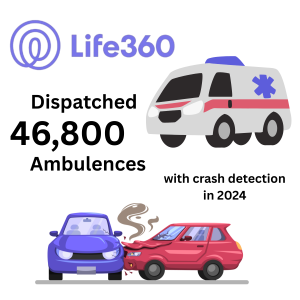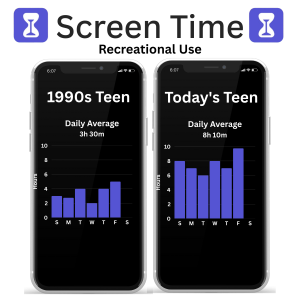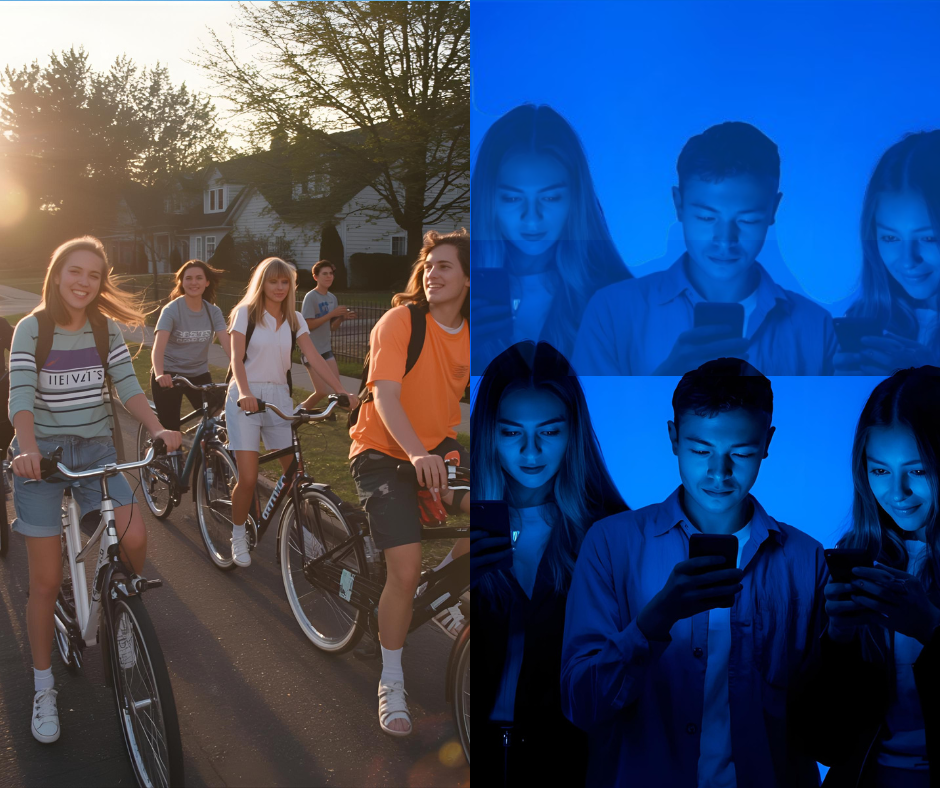Imagine you’re a teenager in the 1990s. Your parents may wave as you biked off to a friend's house, not knowing exactly where you were until you returned for dinner. Fast forward to today, a ping on an app such as Life360 shows your exact location, how fast the car was going, and even how much battery your phone has left. The difference between the adolescence experience in the past compared to now is vastly different. Today's teens are growing up more connected, but also more closely monitered.
Growing up in today’s digital age is drastically different from the world our parents grew up in. With social media on the rise, there are now Instagram Stories, Snapchats, and group chats instead of face to face interactions.

One of the clearest examples of this new dynamic is Life360, the location-sharing app many families use. Math teacher John Matzke’s family uses a similar location-sharing app.
“The apps can be helpful in parenting if you have a good relationship with your children and you love and trust each other,” Matzke said. “My son will text me and ask me what I'm doing at Menard's.”
Parents argue that Life360 gives them peace of mind. They know their kids made it to their destination safely and when they are going the speed limit, or when their child is about to arrive home. In a world where safety concerns are real, many see it as just another tool to keep kids protected. The app also provides a feature called crash detection which can be enabled to automatically call life-saving ambulances to a scene when it detects a car accident.
“The crash detection system is a great tool,” senior Mina Al-Yaseen said. “I am better connected to my family in times of need and have access to resources that my parents did not have at my age.”
Often, teens feel differently. Constant location-tracking can feel less like protection and more like surveillance. The message sometimes can be sent as mistrust in their kid. It can make independence, the thing adolescents are known for navigating and learning, much more difficult to develop.
Both of these views have truth in them, but together they reveal what's actually happening. The reality is, growing up now means living under a spotlight that past generations never have faced.
Beyond Life360, there are other pressures of adolescence like constant connection. Unlike parents, who could leave the school drama at school, teenagers nowadays keep it in their pockets. Notifications buzz at all hours of the day, keeping teens distracted and under a constant burden. Social media creates a never ending loop of a highlight reel for us to compare ourselves to.
“Having technology as a major aspect in our everyday lives has its pros and cons of course,” Al-Yaseen said. “Technology has also created issues, the digital age has created the capacity for increased bullying and self esteem problems.”
Pushing the negatives of new technology aside, there are also many positives. We can FaceTimes our friends and family from any point in time and from any location in the entire world. Platforms like YouTube where we can learn to do anything with endless how-to tutorials.
“It's cool that technology allows you to learn about anything you'd like to study,” Matzke said. “For example, I've learned a ton about home remodeling now that my kids are buying their first homes and we're trying to fix them up.”
Technology is a great tool in terms of connection and sharing ideas. But what is the cost of this hyperconnectedness? The cost is the transparency and being monitored, sometimes by choice and sometimes not.
Growing up today isn’t necessarily better or worse than growing up as a teenager than it was in the past, it’s simply more visible. Every move, post, opinion, and location ping leaves a digital footprint that parents, peers, and even strangers can see. If adolescence in our parents' time was about learning and navigating growing up, now is about learning to navigate it while being watched.




